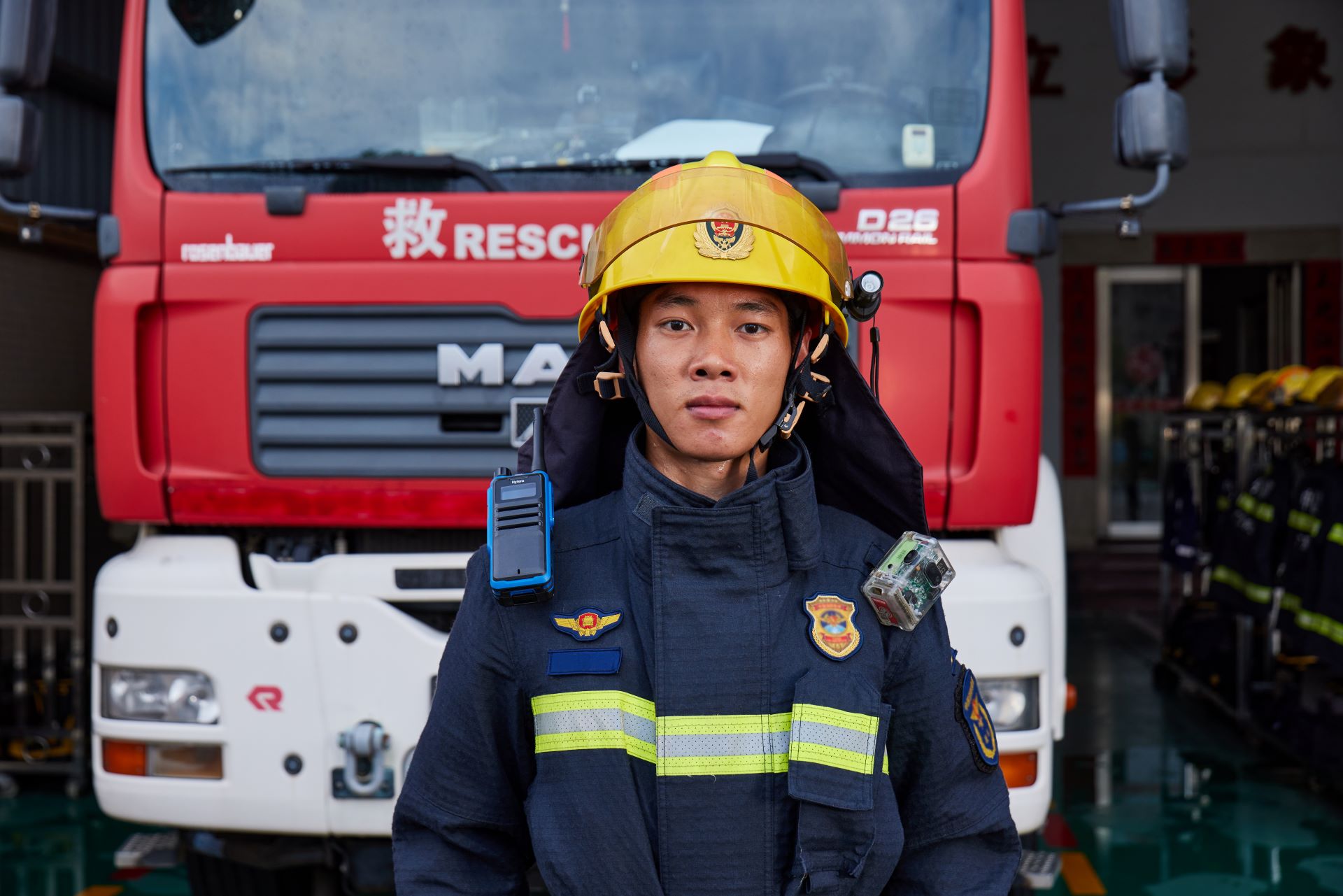Exploring Private Network Communication Formats
Two-way Radio
Hey, if you're as into private network communication gear as I am—whether you're a pro using it every day or just a total tech nerd—you know there's a ton of different standards out there. To be honest, even though I've heard of all these standards, I'm still wrapping my head around what they actually mean in the real world. So, I'm stoked to share what I've learned so far.
Next, I would like to share on several topics:
1. Concepts of Key Formats in Private Network Communication;
2. Differences Among the Formats;
3. Country - Specific Applications;
4. Hytera Terminals Related to Various Formats.

1. Concepts of Key Formats in Private Network Communication
DMR (Digital Mobile Radio)
DMR is an open standard cooked up by the European Telecommunications Standards Institute, or ETSI for short. It uses this cool dual - slot TDMA access method, with a 12.5kHz channel spacing and 4FSK modulation, sending data at 9.6kbps. And get this, DMR divides its equipment into three classes. Class I is for those short - range, no - license - needed situations. Class II is what most professional walkie - talkies fall under—you can use them directly or through a repeater, but you'll need a personal license. Then there's Class III, which has a central controller calling the shots. It's also a personal - licensed DMR trunking system. You can do pretty much anything with it: make voice calls, send data, use push - to - talk, make individual or group calls, even broadcast messages.
P25
P25 is like the go - to digital communication standard for public safety in the US. The older version used FDMA, but the new one switched to TDMA. It uses IMBE or AMBE codecs over FSK. This standard is a game - changer for cops, firefighters, and emergency responders. It's all about keeping them connected when things get crazy. The switch from FDMA to TDMA was all about squeezing more out of the spectrum and adding some really cool new features.
TETRA (Terrestrial Trunked Radio)
Another ETSI creation, TETRA, is built for government, public safety, emergency situations, and high - end businesses. It's got 4 - slot technology, a 25kHz channel spacing, and π/4 - DQPSK modulation. With a full - channel data rate of 36 kbit/s and a voice coding rate of 7.2 kbit/s, TETRA is a beast. It can handle command and dispatch, data transfer, and voice calls all on one platform. And if the network goes down? No problem, it can switch to direct mode. Plus, it's got all these encryption methods like E2EE and AIE to keep your messages super secure.
PDT (Professional Digital Trunking)
PDT is China's home - grown standard, developed by Hytera (I am very honor to be a member of Hytera)! They took some international tech and added their own spin on it. It's a hit with all kinds of trunking communication users, especially in Chinese public security. Whether it's day - to - day police work, handling emergencies, or keeping things running smoothly during huge events, PDT has got it covered. It's specifically designed to fit the Chinese market, like integrating with existing public security systems and working across different regions.
2. Differences Among the Formats
Modulation and Access Methods
DMR's dual - slot TDMA and 4FSK modulation are like a smart way to share the spectrum. It splits up time so multiple people can use the same channel. P25's move from FDMA to TDMA was all about beefing up communication for public safety. TETRA's 4 - slot TDMA and π/4 - DQPSK modulation are built to handle a ton of traffic, especially when it's important. And PDT? It's got its own optimized setup, perfect for dealing with interference in busy Chinese cities.
Application Focus
DMR is like the jack - of - all - trades. It works for small businesses, medium - sized companies, and even some public services. P25 is pretty much locked down to US public safety. It's the glue that keeps cops, firefighters, and paramedics in touch. TETRA is used all over the world in high - stakes situations, like in transportation, utilities, and the oil and gas industry. And PDT? It's all about keeping Chinese public security teams connected, whether it's the police, traffic cops, or disaster responders.
Data Rates and Voice Quality
DMR's 9.6kbps is enough for basic voice and data in most cases. P25's special codecs like IMBE or AMBE make sure voices come through loud and clear during emergencies, and it tweaks the data rate as needed. TETRA's 36 kbit/s full - channel data rate is super high, so it can handle complex data and great - quality voice, even in tough conditions. And PDT? It's optimized its data rates and voice coding to work perfectly in all the crazy situations Chinese public security teams face.
3. Country - Specific Applications
DMR
DMR is everywhere! In Europe, it's big in commercial stuff and some public services because it's an open standard and doesn't break the bank. In Asia, countries like India and in Southeast Asia are starting to use it in hospitality, construction, and logistics. And in Africa, it's making its way into mining and transportation to speed up communication.
P25
P25 is mainly a US thing. It's the heart of public safety communication over there. No matter if it's a local police chase or a huge disaster response, P25 makes sure everyone can talk to each other.
TETRA
TETRA is all over Europe for government, public safety, and high - end business use. In the UK, they use it at Heathrow Airport to keep ground crew, security, and air traffic control on the same page. In the Middle East, countries like the UAE rely on it for public safety and in the oil & gas industry, especially in those tough desert conditions.
PDT
PDT is China's pride and joy. It's a key part of the country's public security setup. It keeps cops on patrol connected, helps manage big events like the Beijing Olympics and Shanghai World Expo, and keeps traffic flowing smoothly day to day.
4. Hytera Terminals Related to Various Formats
DMR/PDT - Compatible Hytera Terminals
Hytera stands out as a leading provider in the realm of professional mobile radio communication, particularly renowned for its state-of-the-art DMR (Digital Mobile Radio) and PDT (Professional Digital Trunking) - compatible terminals. Among its diverse product lineup, the HP series shines as a prime example of technological excellence and practical design. These terminals seamlessly integrate advanced digital communication protocols, ensuring crystal-clear voice transmission, enhanced security features, and robust connectivity even in challenging environments. Whether deployed in critical public safety operations, industrial applications, or large-scale event management, the HP series terminals offer reliable performance and user-friendly interfaces, making them an indispensable tool for professionals who rely on seamless communication for mission-critical tasks.
TETRA - Enabled Hytera Terminals
Renowned for delivering reliable, high-performance communication solutions, Hytera has become a trusted choice for public safety agencies, transportation networks, and large-scale enterprises that require secure and efficient critical communication systems. A prime illustration of Hytera's innovation in this space is the PT590 TETRA portable radio. This compact yet robust device is designed to meet the stringent demands of mission-critical operations, featuring a durable build that can withstand harsh environments. It offers crystal-clear voice communication, advanced encryption protocols to safeguard data integrity, and a user-friendly interface for seamless operation, making it an invaluable asset for professionals who rely on instant and secure communication channels.
In conclusion, the exploration of private network communication formats has revealed a multifaceted landscape, where security, efficiency, and compatibility are key pillars. Proprietary protocols like SRTP and QUIC offer enhanced protection against eavesdropping and data breaches, making them ideal for sensitive communications within closed networks. Meanwhile, customized binary formats enable optimized data transmission, reducing latency and bandwidth usage, which is crucial for real-time applications.






